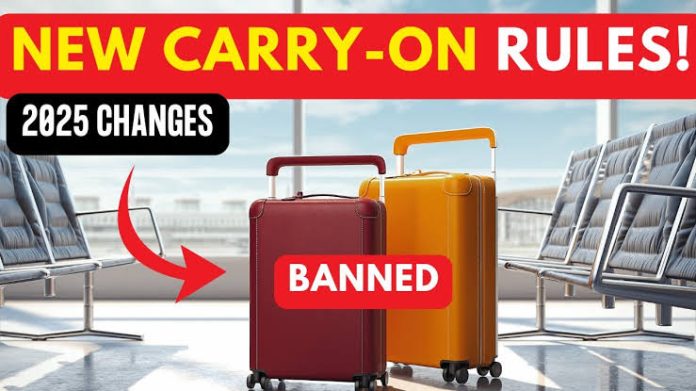For nearly two decades, U.S. flight passengers could only fly with liquids in 3.4-ounce (100 ml) containers, tucked inside a quart-size clear plastic bag – but new TSA technology is about to change all that.
It’s actually a counter-terrorism measure designed to prevent attacks using liquid explosives, with 100 ml being the maximum amount that could detonate within a cabin without causing catastrophic damage. It minimizes the risk of hazardous substances slipping through security screenings unnoticed.
However, new computed tomography (CT) scanners that can analyze the contents in bottles are currently being installed in the nation’s busiest airports.
This means that full-size items could soon be on the roster again, with the TSA releasing a list of 11 items that no longer have to fit the three-ounce rule. Meanwhile, major changes are coming to over 4,000 Wells Fargo locations nationwide.
The items include:
Over-the-counter medications
Prescription medications in gel, liquid or aerosol form
Ice packs or gel packs for medically necessary items
Food and drink for infants and toddlers
Wet batteries
Live fish transported in water
Biological specimens
Breast milk or baby formula
Liquid-filled teethers
Duty-free items sealed in a tamper-evident bag
Fresh eggs
And if everything goes according to plan, shampoo, perfume, sunscreen, and body washes could soon join this list.
The list of permissible liquids is anticipated to gradually grow throughout 2025. This technology has been rolled out in Atlanta, JFK, and LAX, the country’s busiest airports.
However, remember that not every airport has adopted this rule yet, so it’s vital to check the rules on each airport’s website before you leave.
You can download the free myTSA app, which has a handy “What can I bring?” feature that allows you to type in the item to find out if it can fly. Or ask on Twitter or Facebook Messenger at @AskTSA. Travelers may also send a question by texting “Travel” to AskTSA (275-872).
Similarly, international airports will take time to catch up, so it’s likely that you’ll still have to hang on to your travel-sized containers for just a little longer.
Christopher Murgia, TSA’s Federal Security Director for Maryland, said in a previous interview, ‘know the contents of your carry-on bag.’
“It’s best to begin packing for travel with an empty bag, because that way travelers are less likely to see their carry-on bag trigger an alarm. If you start with an empty bag, you know with certainty that you do not have anything prohibited inside,” Murgia says.
Computed tomography (CT) scanners at airport checkpoints enhance security efficiency and decrease the amount of time travelers spend in the security screening process. Installation of the lanes began in late spring, according to TSA .gov.
The CT scanners provide a clear 3-D image of the contents of a traveler’s carry-on bag. Using a touch-screen monitor, TSA officers can rotate the image to get a more complete view of what is inside each bag. In doing so, TSA officers are able to better identify items inside a bag, which results in fewer bags needing to be pulled aside and opened. The 3-D images also enable TSA to better and more quickly identify any threat items that might be contained in carry-on bags.
– TSA news letter
Share your story or advertise with us: Whatsapp: +2347068606071 Email: info@newspotng.com

















